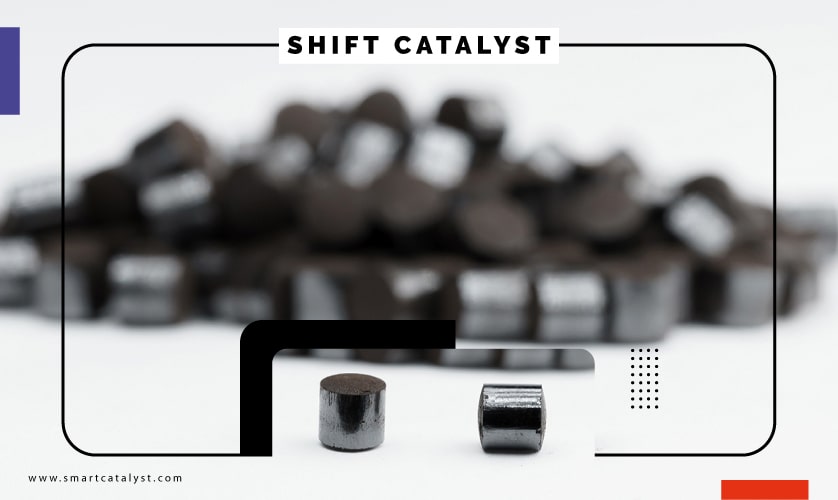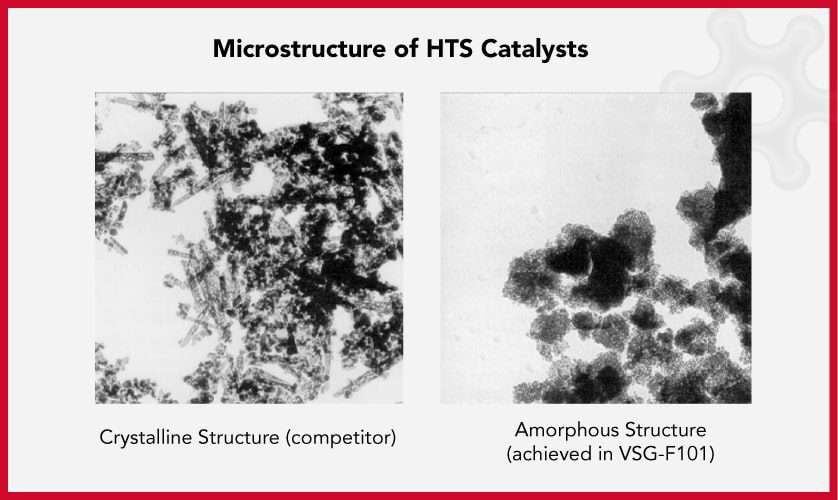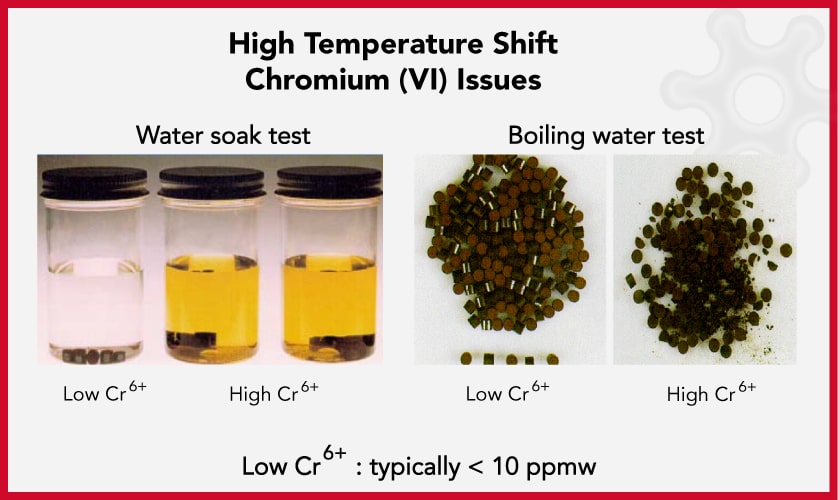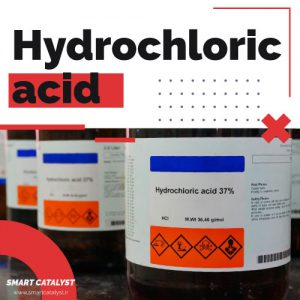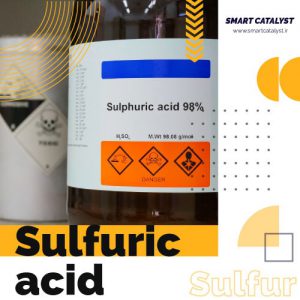High Temperature Shift Catalysts
SmartHTS is an iron-chromium based catalyst promoted with copper used for the conversion of carbon monoxide via the water-gas shift reaction in hydrogen and ammonia plants.
CO + H2O ↔ CO2 + H2
The chromium oxide in the catalyst reverses the thermal degradation of the magnetite and prevents the catalyst contact surface at low temperatures. Generally, the existence of chromium increases the life of the catalyst and acts as a stabilizer. The combination of iron oxide and chromium oxide also changes based on the kind of manufacturer. The incorporation of copper into the catalyst structure, providing good dispersion as well as small crystallite size, significantly increases the intrinsic catalytic activity and brings the reaction closer to the thermodynamic equilibrium (low approach to equilibrium).
|
Physical Properties |
|||
| Code | SmartHTS1 | SmartHTS2 | |
| Form | Tablet | Pellets | |
| Size, mm | 6 x 6 | 4.5 x (4-12) | |
| Bulk Density, kg/l | 1.12 ± 0.1 | 1.12 ± 0.1 | |
| Radial crush strength, Min.Average, kgf | 10 | 10 | |
|
Chemical Analysis (Nominal, wt%) |
|||
| Fe2O3 | > 85 | ||
| Cr2O3 | 8 ± 1 | ||
| CuO | 1.8 ± 0.3 | ||
| Sulphur, ppm | < 250 | ||
Low Temperature Shift Catalysts
SmartLTS are used for Conversion in synthesis and hydrogen production processes Using coal, naphtha, natural gas and oil field gas as feedstocks, especially for axial-radial low temperature shift converters. Low temperature shift catalysts are commonly made on the basis of ceramic phases filled with copper or copper oxide, while the most common bases involve alumina or alumina with zinc oxide. The role of ZnO oxide is as a catalyst base and also to inhibit copper poisoning by sulfur and chlorine compounds. Aluminum oxide or alumina Al2O3 also prevents dispersion and shrinkage. The catalyst has the advantages of activity at lower temperature. The lower bulk density, higher Copper and Zinc surface and better mechanical strength. The maximum temperature is in terms of the sensitivity of copper to thermal degradation. This low temperature also decreases side effects.
|
Physical and chemical properties |
|||
| Type | SmartLTS10 | SmartLTS20 | SmartLTS22 |
| Appearance | Tablet | Pellet | Pellet |
| Size, mm | 5 x 3 | 5 x 3 | 5 x 3 |
| Bulk density, kg/l | Balance | Balance | Balance |
| Radial crushing strength, N/cm | >160 | >200 | >200 |
|
Chemical Composition (Nominal, wt. %) |
|||
| CuO | 42 ± 2 | 42 ± 2 | 42 ± 2 |
| ZnO | 47 ± 2 | 47 ± 2 | 47 ± 2 |
| Promoter | – | – | < 1 |
| Al2O3 | Balance | Balance | Balance |
| Sulfur, ppm | < 300 | < 300 | < 300 |

